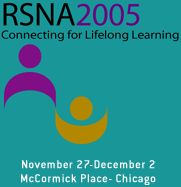
Abstract Archives of the RSNA, 2005
Ovsev Uzuner MD, Abstract Co-Author: Nothing to Disclose
Nafi Aygun MD, Abstract Co-Author: Nothing to Disclose
David Mark Yousem MD, Presenter: Nothing to Disclose
We sought to determine whether MR-Myelography was superior to or complementary to conventional MRI sequences of the lumbar spine.
Forty patients (14 males, 26 females, mean age 55 with SD +/- 17.5 years) had lumbar MRI and MR-myelography sequences. The spin echo T1-weighted and FSE T2-weighted images in both planes were compared with MR myelogram 3D FSE sequences with MIPs.
Two readers evaluated 120 disc levels in 40 patients using the conventional MRI alone and MR-myelography alone. At each level the central canal and right and left lateral recess stenosis and right and left central root compression were graded as none (0), minimal (1), moderate (2), and marked (3). The readers were blinded to the patient identifying information, the results of the corresponding study, and the other reader’s impression. A third investigator who did not participate in grading labeled the levels on the MR-myelography. A consensus reading by the two readers using both the conventional MRI and MR-myelography served as the gold standard. The Chi square test was used for statistical assessment.
A total of 600 levels were evaluated. 86% of the conventional MRI and 75.3% of the MR-myelograms were interpreted correctly by reader 1. Reader 2 correctly evaluated 88.3% of the conventional MRI and 84% of the MR-myelograms separately. When the results of the two readers were combined, 87.3% of the conventional MRI and 79.7% of the MR-myelograms were interpreted correctly.
The conventional MRI was more accurate than MR-myelography in evaluating areas in question using the consensus reading as the gold standard. The difference is significant at P<0.001 via the Chi square test for each reader and for two readers combined.
In evaluation of lumbar central canal and lateral recess stenosis, conventional MRI alone is more accurate than MR-myelography alone. Addition of MR-myelography to conventional MRI resulted in a change in assessment of those regions evaluated in 12- 14% of cases for each reader and 13% for the two readers combined.
Uzuner, O,
Aygun, N,
Yousem, D,
Evaluation of Central Canal and Lateral Recess Stenosis in the Lumbar Spine with MR-Myelography. Radiological Society of North America 2005 Scientific Assembly and Annual Meeting, November 27 - December 2, 2005 ,Chicago IL.
http://archive.rsna.org/2005/4417293.html

